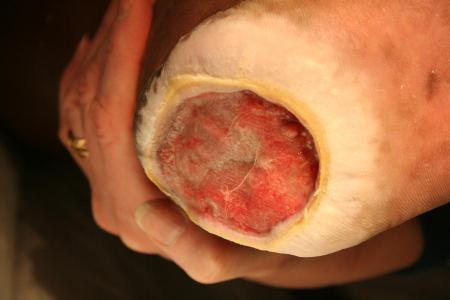Abstract: Background. The evaluation and treatment of heel pressure injuries are a significant and expensive sequela of the aging population. Although the workup of patients with lower extremity tissue loss usually involves an assessment of the arterial blood flow by means of noninvasive vascular testing, the results may be misleading in patients with heel pressure injuries when the ankle-brachial index (ABI) does not provide direct information about perfusion of the rearfoot. The objective of this retrospective, observational investigation was to determine if noninvasive vascular testing provides accurate and reliable results in patients with heel pressure injuries.
Materials and Methods. A retrospective chart review of 67 consecutive inpatients with 75 heel decubitus ulcerations was performed. Results. At least 1 noncompressible ankle artery was observed in 35 (46.67%) of the 75 feet. When at least 1 compressible vessel was present, allowing for calculation of an ABI (n = 49 feet), it was based on the posterior tibial artery in 23 (46.94%) feet and on the anterior tibial artery in 26 (53.06%) feet. In total, of the 75 feet with heel pressure injuries that underwent noninvasive vascular testing, a compressible posterior tibial artery allowing for calculation of an ABI as a direct measure of heel perfusion was observed in only 23 (30.67%) feet. Conclusions. The results of this study suggest noninvasive vascular testing may be inaccurate and unreliable in the majority of patients with heel pressure injuries.







